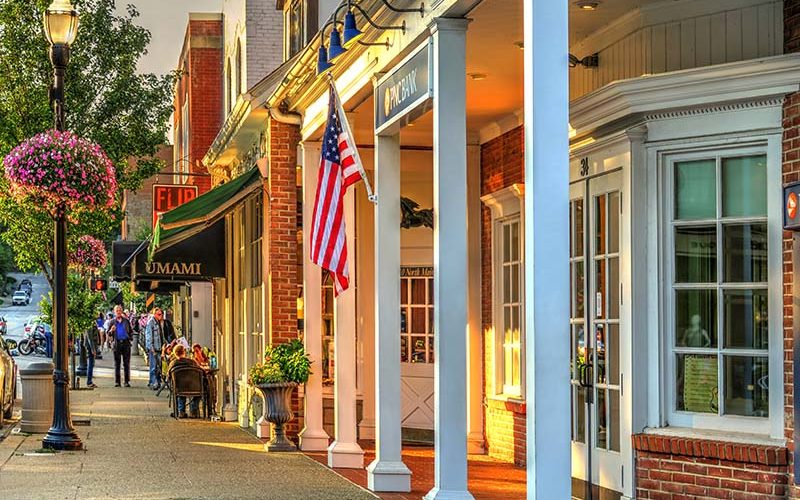The landscape of community banking is shifting. The presence of a neighboring branch no longer indicates how local a bank is. Banking locally does not always equal banking nearby; you can bank online with your local banks long after you’ve moved away just because you want to reinvest there. Online and mobile banking are increasingly the norm.
Just as community banking has changed, so have our methods for evaluating and comparing banks. If you’re looking for a community-focused banking alternative, here are some data-driven ideas to help you choose between banks.
Any bank or financial institution that provides Local Credits to any of the Group Companies is referred to as a Local Bank.
Here are a few things to think about if you want to open an account at a local bank rather than a national one.
What Types of Local Banks Are There?
If you want to bank locally, your options are mostly determined by where you reside. Here are some examples of local banks:
- Minority-owned or led banks (insured by the Federal Deposit Insurance Corporation)
- Minority-owned or Credit union led banks(insured by the National Credit Union Association)
- Community Banks
- Community development financial institution funds (CDFIs)
The FDIC defines a minority-owned bank as one that is owned by African Americans, Asian Americans, Hispanic Americans, or Native Americans, or has a majority of board directors and community members who are members of these groups. Through its Minority Depository Institutions Program, the FDIC maintains a list of federally insured minority-owned banks.
Minority-owned credit unions must have a majority of African American, Asian American, Hispanic American, or Native American members, board of directors, and community members.
The NCUA maintains a directory of minority-owned credit unions that are federally insured.
Local and regional banks fall under the umbrella term “community banks.” Community banks will have assets of less than $1 billion, with loan assets accounting for less than 33% of total assets and main deposits accounting for equal to or less than 50% of total assets, according to the FDIC. Additionally, community banks must operate in a constrained geographic area.
There are approximately 6,524 community banks nationwide. You can use the FDIC’s search engine to determine if a bank near you is a community bank.
Finally, CDFIs are mission-driven NGOs, banks, and credit unions that assist underserved communities. A number of CDFIs are also credit unions or banks controlled by minorities. The Community Development Financial Institution Fund, which certifies CDFIs, has compiled a comprehensive list of CDFIs that you can view.
Factors To Consider When Choosing a Bank
When selecting a bank, it is vital to identify products, services, and rates that fit your requirements. You may ask if size matters when comparing huge national banks to local banks and credit unions. To some extent, yes, but both large and small banks can provide checking and savings accounts, among other critical services.
Here are some things to think about while comparing banks:
#1. Convenience
Choose a bank that will work with you on your terms. If you prefer to bank in person, some institutions may have a stronger presence in your area than others.
#2. Cost
Smaller institutions typically have lower fees, however, this is not always the case. According to Consumer Financial Protection Bureau research released in December 2021, overdraft and non-sufficient funds fees were 13% to 19% cheaper for small banks and credit unions. Determine your banking requirements and compare rates for the services you require.
#3. Services
Small businesses can have a surprising number of products and services to offer. However, there are instances when you require the power of a megabank.
#4. Community
Banking with a local institution helps to support your local economy while also making your banking experience more convenient. However, there are always advantages and disadvantages.
Below, we’ll look more closely at the characteristics of local banks.
Features of a Local Bank
#1. Branches of Local Banks Participate in Community Activities
The majority of banking needs can be met by community banks and local credit unions. They may be small, but that doesn’t mean they can’t suit your demands. Some institutions have limited offers, while others outsource services and even others supply everything you need in-house.
#2. Competitive Fees and Rates
Local banks are sometimes a solid pick for free checking accounts—the account you’re most likely to require. Some banks provide normal free checking to all customers, while others remove fees if you agree to receive electronic statements. They also compete with low-interest savings and loan rates. There’s nothing stopping you from having numerous accounts, even though savings rates may still be greater with online banks (online and local).
#3. Knowledge of the Local Area
Local banks may facilitate transactions because they are involved in local affairs. This is especially true if you need to borrow money. Megabanks, for example, may be unwilling to finance your local business, investment property, or agriculture loan, but local banks are used to analyzing loans in your area.
#4. Personal Attention
Local banks often offer more personalized service than large banks, for better or bad. It’s not uncommon to continue working with the same person. Bank employees can even learn about your needs and recommend bank products that may be beneficial. You form relationships and learn what to expect and who to contact when you have questions. Simultaneously, you lose the privacy that comes with being a large bank customer. If you reside in a small town, you might wish to keep a low profile.
#5. Different Offerings
While local banks and credit unions can provide a wide range of services, including checking accounts, merchant accounts, and wealth management, some organizations are more concerned with meeting fundamental consumer requirements. If your local bank does not handle business accounts and you begin freelancing, you will need to search elsewhere.
#6. Community Engagement
Your banking needs should determine which banks you choose, however dealing with a local institution may provide you with a sense of satisfaction. The local economy is supported by local banks and credit unions, which frequently give back. A local institution’s emblem is likely to appear in charity races and other events, indicating that they contributed money or other resources to help make the event a reality.
Pros of Local Banks
#1. More hands-on banking experience.
Local banks may address specific challenges in underserved populations, such as language barriers or banking regulations because they serve a smaller community.
#2. Greater financing flexibility.
Community banks are a driving factor for local businesses, according to FDIC research. MDIs are especially crucial in delivering house loans and small company loans to underprivileged populations, where national banks frequently fall short.
#3. Fewer fees.
The fees charged by local banks may be lower than those charged by national banks.
Participant in the community. Small nonprofit organizations are frequently hosted or supported by local banks. Some have college scholarship funds as well.
Cons of Local Banks
#1. The availability of local banks varies by state.
Banks in the local area vary greatly. Some may just have one branch, while others may have several in different cities. Your selections will be largely determined by the state in which you live.
#2. Reduced branch presence.
A small geographic area is a home to local banks. If you need to relocate to a new state, you won’t be able to keep your current bank.
#3. Reduced ATM presence
Some local banks may belong to a shared ATM network or have a limited number of ATMs at local branches.
#4. Limited Products and Services
When it comes to bank accounts or loans, there may be a few possibilities. You may also have restricted customer service hours or online tools.
How Do Local Banks Perform In Comparison to Regional or National Banks?
Local banks’ flaws are typically larger institutions’ strengths when compared to regional or national banks.
The federal government chartered national banks have the most presence. National banks have a strong branch presence and ATM network, so when you hear a name like Chase, Wells Fargo, or Bank of America, you immediately recognize it.
National banks can provide more services and products than local banks since they operate on a larger scale. You may have a wider range of account or financing alternatives, but these products may come with higher fees.
Additionally, national banks typically offer more advanced technology and customer care choices, such as live chat features on their websites or online banking tools.
Regional banks provide a banking middleman. Regional banks are spread over a state or region, in contrast to local banks, which are concentrated in a few cities, and national banks, which are available in most states. Aside from that, there are no specific criteria for being labeled a regional bank.
The larger minority-owned financial institutions and community banks may be included in regional banks. East West Bank, South State Bank, and California Bank & Trust are a few examples.
Finding a Community-Oriented, Local Bank
#1. Obtain a list of banks that are concentrated on the geography that is important to you, along with supporting statistics.
The first step in selecting a community bank is determining which region is important to you. It doesn’t have to be your current location, although it may be. What location do you want decision-makers to be in? Do you require access to bankers with regional knowledge? What neighborhoods do you want your money to circulate in? Where do you want branch access? Determine which banks are located in the geographic area that is important to you.
This information is public since each bank is required by authorities to report where their money is based. Banks disclose the location of deposits at branches, in particular. Deposits in branches are the greatest readily known proxy for a bank’s geographic focus, but it is not a perfect guarantee. (By law, banks are not required to publicly disclose the whereabouts of all loan beneficiaries. One motive is to preserve the privacy of customers. Bank regulation incentivizes banks to meet the credit needs of the communities in which they operate.
Some banks only conduct business near their branches, whilst others may offer loans throughout the nation. Nonetheless, looking at where money is headquartered indicates where bank leadership is located and which places are important enough to the bank to invest in a branch there.
#2. Compare how much each bank invests in communities directly.
It’s time to assess each bank’s community investment record once you’ve narrowed down your choice of banks based on a region that matters to you. There are other methods for a bank to display its commitment to the community, such as volunteering or sponsoring activities, but if you can only consider one criterion when looking for a local bank, consider how much the bank directly finances communities.
Banks must disclose how many loans they make for houses, businesses, farms, and other purposes. This tool aggregates government data to show one community financing metric for each bank in the United States. This indicator indicates how much of a bank’s total assets (dollars) are invested in communities through financing for housing, construction, business, farms, and people, as well as public works loans and securities. (You may find government data files here.) A bank must expend more effort to issue a loan in the community than it does to invest in a more passive financial product, such as a mortgage-backed security. No bank can invest 100% of its assets in communities.
#3. Confirm that the bank provides the accounts and loans you require.
If your banking needs are minimal, such as a checking and savings account, then any community bank should suffice. However, if you anticipate needing a mortgage or a small business loan in the future (and if you want to handle all of your banking with a single institution), these requirements can help you limit down your possibilities. Many bank comparison sites only disclose product information for a select few banks. However, because all banks record the types of lending they perform to the government, it is possible to compare all banks depending on the types of loans and services you may require. For all banks in the United States, this database aggregates product information.
Opening a Community or Local Bank Account
Once you’ve selected a bank that works for you, go to their website to figure out how to open an account. Online account opening can take as little as five minutes at many community banks. (Some banks allow online account opening; you can filter by region to find local banks.) Some banks may require you to physically visit a branch. The Consumer Financial Protection Bureau offers a handy checklist for opening a bank account, which includes questions to ask and materials to bring with you.
Are Local Banks Secure?
As long as they’re federally insured, local banks are secure banking options. The NCUA insures credit unions, while the FDIC insures banks. This implies that even if a bank or credit union collapses, the funds in your account will be protected.
The FDIC and NCUA insure individual accounts up to $250,000 and combined accounts up to $500,000. If a bank or credit union is federally insured, it will display a logo at its branch or on its website.
What Is the Difference Between a Bank and a Credit Union?
A credit union is a nonprofit organization owned by its member customers, which is the primary distinction between banks and credit unions. A bank, like any other business, tries to profit from its operations and is owned by investors and shareholders. That disparity is the source of all other discrepancies, such as the significantly lower interest rates on bank account deposits.
- HOW DO BANKS MAKE MONEY: All You Need To Know
- TOP INVESTMENT BANKS IN THE UNITED STATES
- DEVELOPMENT BANKS: Beginners’ Guide with Examples (+Best picks)
- BEST BANK FOR SMALL BUSINESS IN 2023
- BEST BANKS TO BANK WITHIN THE UNITED STATES: Top list






